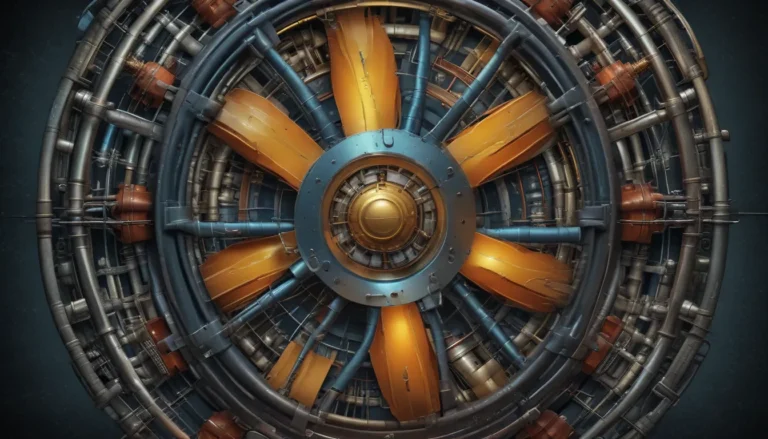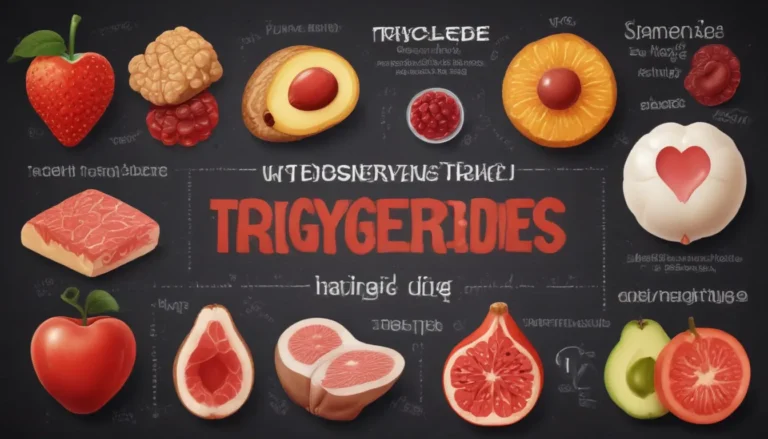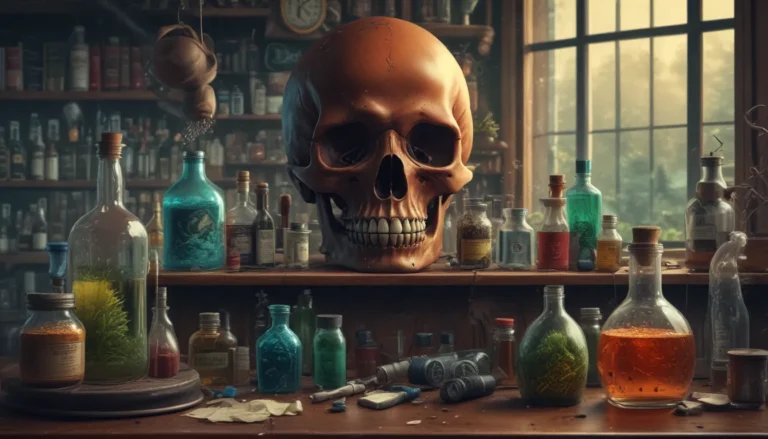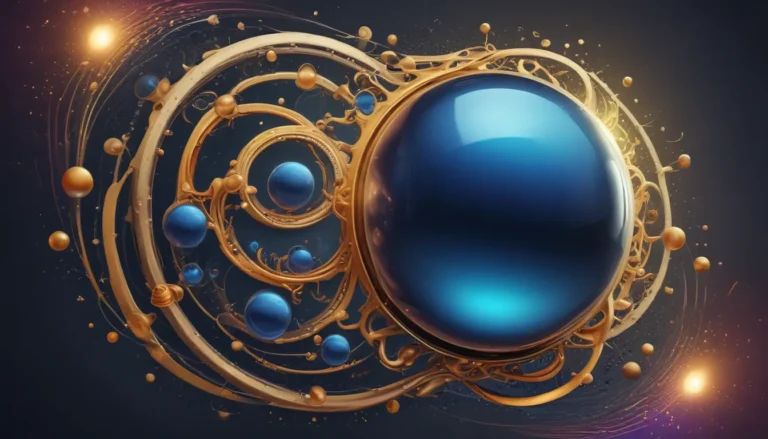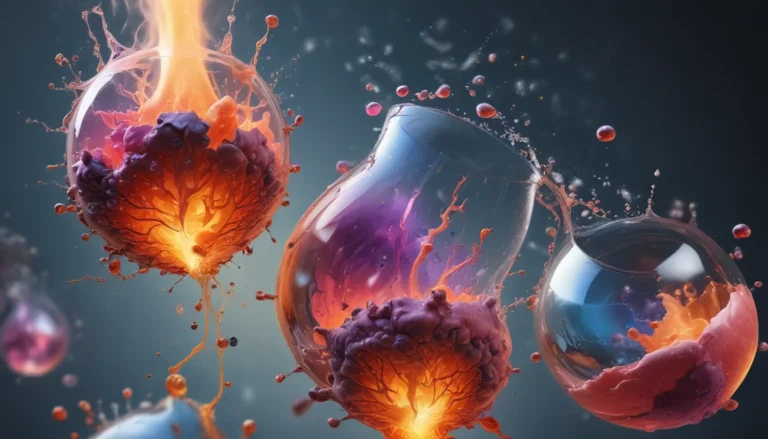A Note About Images: The images used in our articles are for illustration purposes only and may not exactly match the content. They are meant to engage readers, but the text should be relied upon for accurate information.
Rust is more than just a common annoyance or a symbol of neglect; it is a complex chemical process that occurs when iron or metal comes into contact with oxygen and moisture. While many people associate rust with old cars or rusty nails, the truth is that there is much more to this natural phenomenon than meets the eye.
In this article, we will delve into 20 extraordinary facts about rust that will not only spark your curiosity but also shed light on the intricate chemical reactions that occur when metals oxidize. From the surprising properties of rust to its impact on various industries, you will discover how this seemingly destructive process holds hidden wonders.
So, buckle up and get ready to explore the captivating world of rust, where science and beauty converge in unexpected ways.
Key Takeaways:
- Rust is a sneaky chemical reaction that weakens metal and causes costly damage. It can be prevented with coatings and removed with vinegar or lemon juice. Watch out for rusty surprises!
- Rust isn’t just a nuisance—it’s also a historical clue and an artistic touch. It can be harmful to health and machinery, but studying it helps scientists create rust-resistant materials.
Rust: The Basics
Rust is not just a casual inconvenience; it represents a fascinating chemical reaction that occurs when iron or metal is exposed to oxygen and moisture. This reaction, known as oxidation, leads to the formation of a reddish-brown substance known as rust.
Facts About Rust:
- Chemical Reaction: Rust is the result of a chemical reaction between iron, oxygen, and water.
- Common Corrosion: Corrosion is the deterioration of a material due to chemical reactions with its environment, with rust being a prominent form of corrosion.
- Structural Weakness: Rust weakens metal structures over time, potentially leading to failures.
- Distinctive Color: The reddish-brown color of rust comes from iron(III) oxide (Fe2O3) formed during the oxidation process.
Preventing and Removing Rust
While rust may be inevitable, there are ways to prevent its formation and remove it from metal surfaces when it occurs. Protective coatings and various removal techniques can help in managing and combating rust.
Ways to Address Rust:
- Protective Coatings: Applying paint or specialized inhibitors can prevent rust formation.
- Removal Techniques: Vinegar, lemon juice, and commercial rust removers can help dissolve and remove rust.
- Moisture’s Role: Rusting occurs faster in the presence of moisture, highlighting the importance of keeping metal surfaces dry.
The Impacts of Rust
Rust not only affects the appearance of metal objects but also poses risks to health, machinery, and finances. Understanding its consequences can help individuals and industries take proactive measures to mitigate the effects of rust.
Effects of Rust:
- Health Risks: Inhaling or ingesting rust particles can be harmful due to potential toxins and pathogens.
- Financial Costs: Rust can lead to significant financial losses through the need for repairs or replacements.
- Machinery Performance: Rust can impede the proper functioning of machinery and equipment.
Rust in Various Environments
Rust is not restricted to specific settings; it can occur in both indoor and outdoor environments wherever there is moisture, oxygen, and metal surfaces. Understanding its prevalence can help in identifying and addressing potential rust issues.
Environmental Impact:
- Indoor and Outdoor: Rust can occur in a variety of environments, from indoor structures to outdoor vehicles.
- Coastal Challenges: Coastal regions face increased rusting due to high moisture levels.
Beyond the Surface: Artistic and Historical Significance
While rust is often viewed as a detriment, it can also hold artistic and historical value. From its unique texture to its role in preserving ancient artifacts, rust has implications beyond mere corrosion.
Artistic and Historical Perspectives:
- Aesthetic Element: Rust is appreciated in certain art forms for its texture and rustic charm.
- Historical Indicators: Rust on artifacts can provide insights into their age and preservation methods.
Innovations in Rust Management
Studying rust’s mechanisms and properties can lead to advancements in developing corrosion-resistant materials and coatings. By understanding how rust forms and spreads, scientists and engineers can create more durable and sustainable solutions.
Future Developments:
- Corrosion-Resistant Materials: Research on rust helps in creating materials that combat corrosion more effectively.
- Innovative Coatings: New coatings aim to protect metal surfaces from rusting and deterioration.
Conclusion
In conclusion, rust is a multifaceted phenomenon with implications for health, safety, aesthetics, and innovation. By unraveling the complexities of rust, we can better address its challenges and harness its potential benefits.
FAQs
- Causes of Rust: Rust occurs when iron reacts with oxygen and moisture, leading to corrosion.
- Preventing Rust: Protective coatings, dry surfaces, and corrosion-resistant materials can help prevent rust.
- Harmful Effects: While rust itself may not be harmful, it can weaken structures and contaminate the environment.
- Rust Removal: Rust can be removed through various methods, including chemical treatments.
- Benefits of Rust: Some applications utilize rust-derived materials for various purposes.
- Non-Metallic Rust: Rust specifically refers to iron corrosion, but similar processes occur in other materials.
As we unravel the mysteries of rust, we uncover a world where science, history, art, and innovation intersect. Embracing the complexities of rust can lead to new insights and solutions that enhance our understanding of this intriguing natural phenomenon. Let’s continue to explore and learn about the hidden wonders of rust and its impact on our world.

